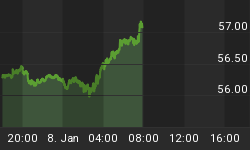After over a year and a half of decreasing Bitcoin mining revenue, a new report shows a small yet significant recovery in the gross margins. Let's take a look at what the mining industry has been through in recent years, and what this recovery could mean for the near future.
A dip in the industry Last month, Bitcoin mining revenues fell to their lowest intake since August 2017. The total mining income in February 2019 totalled $195 million – a mere fraction compared to the $951 million peak of December 2017, and a 10 percent decline from the previous month.
The digital currency data analysis institution, Diar, reports the following statistics:
“In December 2017 fees alone earned miners over $295Mn. But along with the price drop and the adoption of SegWit rising from an average of 12 percent in January 2018 to over 43 percent in February this year, revenues from fees have become an afterthought.”
The downturn of the crypto-market towards the end 2018, which saw deflation of around 50 percent in the crypto-market, caused the mining industry to suffer. Smartereum reported last November that a great deal of bitcoin miners began leaving the network after BTC dropped 40 percent in price within two weeks. This was the point where the market valuation of bitcoin fell below $4000 for the first time since September 2017.
Even miners with an optimal set-up of equipment and electricity prices have been experiencing reduced growth margins, thus needing to deploy a great deal of the hashpower to remain afloat. Private miners and individuals who don’t have significant capital for investment would not be able to keep up. Only pools who can afford the newest equipment and have a cheap energy supply can profitably mine Bitcoin.
A shift into growth
However, this 18-month dip is seeing a small yet hopeful turn-around. Diar’s report showed us a rise in the mining gross margins of Bitcoin.
The gross margins of the miners went down from 94 percent at the beginning of 2018, to 32 percent at the beginning of 2019. But in February, the gross margins rose up slightly to 39 percent as shown in the graph below.

(Click to enlarge)
Source: DiarAnother indication of things looking brighter for the mining industry is Bitmain’s recent success. Despite the recent hardships of the mining empire, some of their equipment sales show a growing interest in mining.
Related: Gates And Bezos Back Artificial Intelligence Exploration Startup
For example, their most recent flagship miner, the S15, has already sold out twice, with the next batch becoming ready for distribution in April. The S15 is expected to bring 84 percent more return compared to the older model. Furthermore, Bitmain introduced the next generation 7nm ASIC Chip for SHA256 mining which is supposed to be 28.6 percent more efficient.
What can we expect?
While there is a positive turn in the mining industry, we cannot make wild assumptions about the implications it may have on the market in the near future. The information here is not sufficient to conclude that an indication for a nearing bull market or an improvement of price stability.
Nonetheless, Smartereum reports a hopeful perspective on the matter:
“The total daily trade volumes for BTC have increased significantly since the beginning of the cryptocurrency winter hitting as high as 350,000 transactions in March. What this means is that people are beginning to focus less on the price of BTC and more on the BTC technology. So, even if the price isn’t at its best, the confidence of the true Bitcoin believers is still stronger than ever. It is this confidence that drives adoption.”
Another important point to note is that in May 2020, Bitcoin is going to be halving - namely, the bitcoin mining rewards will be algorithmically reduced by 50 percent. This means that the rewards per newly discovered block will drop from 12.5 to 6.25. Mining will be significantly less profitable if the Bitcoin price will not grow by then.
By Inbar Preiss via Crypto Insider

















